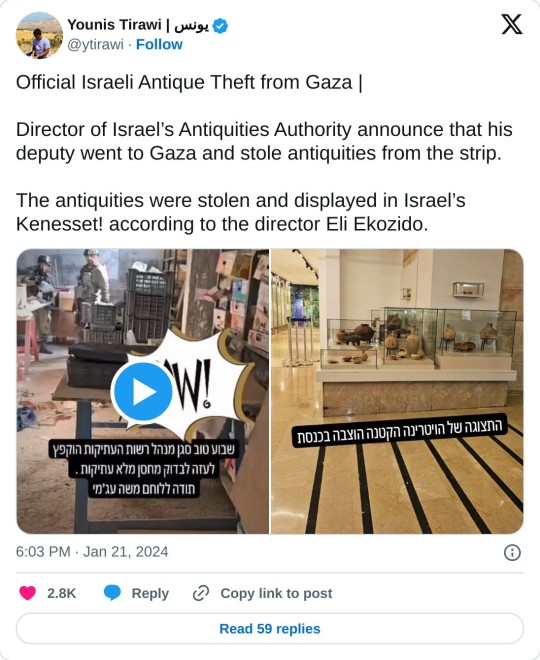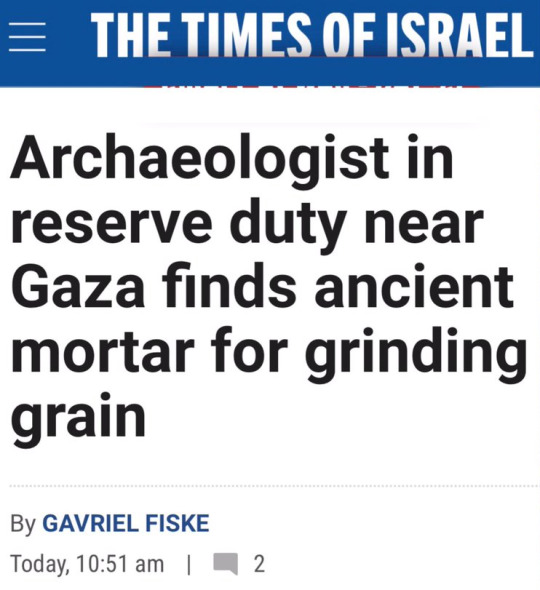Note
. . .Osiris
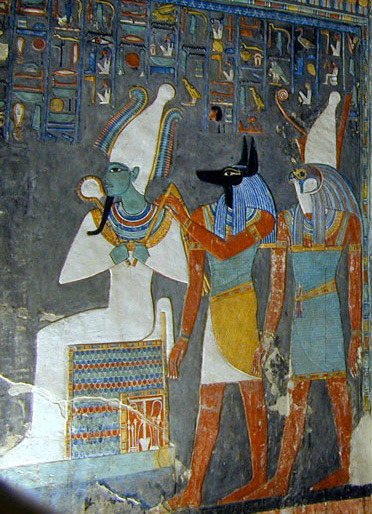
Osiris (Great and Beautiful is He) is the God of the Underworld; its King and Pharaoh ruling over the Duat. He is pictured here on the far left, His skin green and His body in mummiform. This is commonly how He is depicted; as a green-skinned, mummified man.
Son of Nut, the Sky Goddess, and Geb, the Earth God, Osiris was the first King of Egypt in accordance with Kemetic mythology, although there are stories that recount Geb, His father, being King before Him. There are a great deal of myths and stories that surround and involve Osiris, and I suppose it is important to at least skim over them before discussing hard facts about Him, as it gives some reference as to who He is and what the culture surrounding Him is like.
Osiris Myth
After the world was created, the Demiurge (who changes according to myth, and can be Neith, Ra, Amun, Ptah, or others) produces children; in the most popular form of this creation story, it is usually Ra who births the first Gods. They are Shu and Tefnut, Air and Moisture. Shu and Tefnut then form a union and birth two children of Their own: Nut and Geb, Sky and Earth. Nut and Geb were very much in love and refused to separate from each other, which, of course, caused a problem, because if the sky and the earth are eternally in contact, there is no space for anything to live and walk upon the earth. Ra made it so Nut and Geb were forever separated, by having Shu, air, stand atop Geb and hold Nut up as the sky. But Nut was already pregnant. When Ra discovered this, He was enraged, and forbade Nut from ever giving birth on any day of the year.
Nut cried to Djehuty (Thoth), and Thoth devised a plan. He went to Khonsu, God of the Moon, and set up a gamble, saying that every round of the game Senet Khonsu lost, He would have to give Nut some of His moonlight. Khonsu ended up losing so many times that Nut had enough moonlight for five days––five days that weren't in the calendar. This allowed Her to give birth on those five days, and on each day She had a different child; Ausir (Osiris), Wr-Heru (Horus the Elder), Sutekh (Set, Seth), Auset (Isis), and Nebet-Het (Nephthys). Nut and Geb were still forever separated by atmosphere (Shu), but the five Gods were birthed, and Osiris, as the eldest son, became King of the Living World.
As a side note, all Gods do have ancient Egyptian names which are different from Their Greek and now modern names. For convenience's sake, and to avoid confusion, I will use the names They are most known by; Their Greek/modern names. And as another side note, there are a lot of variations on this story. I will be piecing together a lot of different ideas but I will be leaving some things out for the sake of cohesion.
When Osiris came to Egypt, He found the people there to be chaotic and lawless. As King, He instituted laws and spread ma'at, which is truth, justice, harmony, and order. Egypt flourished under His rule and the people were incredibly happy, as all were equal, and with the fertility of the God-King, the crops were always bountiful and food was plenty. He brought not only law and prosperity, but also the right way to worship, and the teachings of agriculture.
Set, God of chaos, confusion, the desert, and of foreigners, and the youngest brother of the Ennead, grew to be quite jealous of His older brother. There are many variations and the most popular variation of this story comes from the end of the New Kingdom (1550-1070 BC), where Set fashions a fabulous coffin in the perfect measurements of Osiris, throws a party, and tells the party-goers that whomever the coffin fits may have the coffin as a gift. When Osiris fits perfectly, Set quickly shuts and bolts the coffin and throws it in the Nile (this version of the myth gives an origin to the idea that people who drowned in the Nile were holy). His coffin drifts downstream and into the Mediterranean, where it washes ashore in Phoenicia, in Byblos. The coffin wedges itself into a growing tamarisk tree, a tree which envelops the coffin. Eventually the tree is cut down and used as a pillar in the palace in Byblos.
Isis, Osiris' wife and sister, searched far and wide for Her husband, and did eventually find Herself in Byblos. The story is quite long and complicated, but in the end She convinced the King to give Her the pillar, and when she returned to Egypt, She hid Osiris in a swampy area of the Nile delta, and bade Her sister, Nephthys, to watch over Him while She went in search of healing herbs. But Seth heard that Osiris was back, and so after interrogating His sister-wife, Nephthys, He found Osiris, cut His body into pieces, and threw them into the Nile.
Isis was horrified at what transpired in Her absence, but She immediately set to work on finding the many pieces of Her husband with the help of Her sister, Nephthys. They managed to find every piece of His body except His phallus, which had been eaten by an oxyrhyncus fish, a fish that was thus forbidden to eat.
With the pieces of Osiris reassembled, and the healing powers of Isis in full power, Osiris was brought back to life, but incomplete. Isis assumed the form of a kite, and from above drew out the seed of Osiris, impregnating Herself with Their child: Horus the Younger. But Osiris, still incomplete, could not properly rule over the land of the living any longer.
This is why He is the ruler of the dead––He was once the king of the living, was killed, and was resurrected, and this is what every ancient Egyptian expected and hoped would happen to them: that they would die and be resurrected. In tombs and mortuary temples you will always see Pharaohs associating themselves with Osiris.
But this long myth I have just told you is not the only version of the story, and in my opinion, it is definitely the longest version of the story. Back in the Old Kingdom and Middle Kingdom there were several different versions; for example, Set's motive is different, ranging from revenge for Osiris kicking him, to revenge for Nephthys (Seth's sister-wife) sleeping with Osiris (which eventually births Anubis). Some texts claim that Seth took on the form of a wild animal, such as a crocodile or a hippopotamus, and killed Osiris that way. In others, Osiris is drowned. In some, the steps surrounding the coffin are skipped, and Osiris is simply cut up, and His pieces scattered around Egypt; a version which explains the many cult centers of Osiris claiming to be a place where Osiris is buried. Osiris' resurrection is also often helped along by other Gods such as Thoth (God of wisdom) and Anubis (God of embalming). In some versions, Set is killed for His actions. In most He is simply defeated and driven from the land, as chaos is necessary for balance and harmony, and thus cannot be killed. And the story that I have told is from the Late Period, recorded by Plutarch, and does not really go along with many Egyptian accounts, which often find Osiris' penis intact.
So that is the Osiris myth with all of its' intricacies and changing rhythms over the course of 4,000 years of Egyptian history. It embodies a huge amount of cultural practices and religious ideas within ancient Egypt, including the idea of truth, harmony, and justice, as well as resurrection, the afterlife, healing, and the workings of the cosmos. I've decided to leave out the later parts involving Osiris' son, Horus, and His fight with Set, for now because this does not directly involve Osiris, and that is our topic for this post.
Tradition, History, and Culture
Worship of Osiris dates back to the Old Kingdom, but the idea of Osiris is likely older than this. Before Osiris was actually Khentiamenti, an agricultural God centered in Abydos, a city which would later become the cult center of Osiris. Khentiamenti means 'Foremost of the Westerners', a title for the ruler of the dead, as the dead resided in the west, where the sun set each day. But Osiris Himself is not found mentioned in any texts or carvings until the 5th Dynasty, where He is depicted as a man wearing a divine wig. Later on He would take on the form we know Him best in––wrapped in a white mummy shroud, wearing an atef crown with ostrich plumes on the sides.
The mummy shroud He is depicted in forever associates Him with death and with the essential story behind Him, which is why I found it so important to start off with the Osiris Myth. This myth is also why He consumed and took the place of Khentiamenti; the name Khentiamenti, Foremost of the Westerners, instead became a title for Osiris as the King of the blessed dead. Another common epithet/name of Osiris is Wennefer (Omnophris), meaning 'The Beautiful One', 'The Beneficent One', and more archaically, 'One Whose Body Did Not Decay'. Among these names He was also called 'The Lord of Love', 'The King of Living', and 'The Eternal Lord'. From the Early Dynastic Period up until the end of the Ptolemaic Dynasty, when Rome conquered Egypt, Osiris was one of the most highly worshipped and revered Gods of Egypt.
Osiris was associated with the Nile river, with its' renewal and life-giving abilities, as one of Osiris' domains and powers was fertility, as well as rebirth. Another of His duties, evidence of which originates in the New Kingdom, was to act as judge of the dead; being King, He sat on the tribunal with the 42 Judges in the famous Weighing of the Heart ceremony. In this ceremony, which took place in the afterlife, the deceased would have to stand before the court and place their soul up for judgement. If it weighed lighter than the feather of Ma'at, representing all justice, truth, and harmony, then the heart acted well in life and would be allowed eternal happiness in the Field of Reeds. If not, the heart, and thus the person, would be consumed by Ammit and committed to nothingness. So Osiris would sit in on this tribunal and judge who entered His kingdom, as it was His domain. In this role, and in His role as King of the Living, as well, He was the embodiment of harmony, law, and justice.
"Most of his appeal was based on his embodiment of the cosmic harmony. The rising Nile was his insignia, and the moon’s constant state of renewal symbolized his bestowal of eternal happiness in the lands beyond the grave. In this capacity he also became the model of human endeavors and virtues..." (The Complete Gods And Goddesses Of Ancient Egypt, p.307)
As I mentioned earlier, Abydos became His cult center, as it was the cult center of the God who came before Him, whose traits He subsumed. It became a very popular burial site, as legends would say that Abydos was where Osiris was truly buried, and the people wanted to be buried as close as possible to Osiris. At one point they believed an ancient tomb there––which was actually the tomb of an Early Dynastic King––to be the tomb of Osiris, which they much revered, and left so many offerings in clay pots that Arabs would later call the site 'Umm el Qa'ab'; Mother of Pots. But this was not the only burial site of Osiris; since many variations of the myth include Set chopping up and dismembering Osiris into many parts, ranging from 14 to 42 different parts. These parts were scattered across Egypt, so many cities and nomes could claim that they had a part of Osiris buried in their domain. For example, far in the south, the island of Bigah claimed to be the burial site of Osiris' left leg, and thus the source for the yearly Nile inundation.
Going back to the Osiris Myth, after Osiris died and became the ruler of the dead, His son took His place as King of the Living: the falcon God, Horus (Heru the Younger). After the brief bout of chaos brought about under Set's rule, Horus took over (after much deliberation from the Gods) and order was restored. Because of this story, Pharaohs would not only associate themselves with Osiris in death, but with Horus in life. Each Pharaoh, as they came to the throne, would become the living embodiment of Horus on earth, the son of Osiris. In this way, Isis was also the mother of every Pharaoh, and their protector. And, to added extent, each Pharaoh would have a personal name, and then a Horus name granted to them when they ascended to the throne.
"It is for this reason that Osiris is so often depicted as a mummified pharaoh; because pharaohs were mummified to resemble Osiris. The image of the great mummified god preceeded the practice of preparing the royal body to look like Osiris... The king's appearance as modeled after Osiris' extended throughout his reign; the famous flail and shepherd's staff, synonymous with Egyptian pharaohs, were first Osiris' symbols as the flail represented the fertility of his land while the crook symbolized the authority of his rule." (Osiris, World History Encyclopedia, Joshua J. Mark)
Osiris can also be represented by a number of physical symbols, such as the crook and flail that He carries in almost all representations of His earthly form. The crook, which is the striped hook He carries, represents power/authority, and is a symbol of the Pharaoh. The flail, which is the instrument in His other hand, represents the fertility of the Nile, and as an extension, the fertility of Osiris Himself. But the crook and flail, though both seen typically as symbols of Pharaonic power, are actually the tools of a shepherd. There is reasonable evidence, thusly, to suggest that the physical origins of the idea of Osiris may not be that of a great King, but of a ruler of a shepherd tribe in the Nile Delta, whose rule was so beneficent that it led to him being worshipped as a God. For Egyptologists, this theory comes from His association with Andjety, a predynastic God-King worshipped in the Delta who also bore the crook and flail as His symbols. This, however, has not and likely cannot be fully proven. But the postulation is still interesting nonetheless!
Osiris' ba soul had its' own culture of worship, a practice of soul-worship that is prevalent in the cults of several other Gods, such as Hathor (HwtHer). In this form, Osiris was known as Banebdjedet, meaning 'The Ba of the Lord of the Djed,' which in English terms means 'The Soul of the Lord of the Pillar of Continuity', as ba means soul, and djed is the symbol for a pillar, which represented the backbone of Osiris. Interestingly, the name Banebdjedet is feminine, as the letter t denotes a feminine word or name in ancient Egyptian; although there are also variations on this name that exclude the t in favour of the alternative, Banebdjed. Banebdjedet, Osiris' ba soul, was worshipped mainly in Mendes, a city in Lower Egypt, in the Delta.
This leads to an interesting point concerning the androgyny of Osiris, a subject I found while researching for this post. Osiris' fertility comes from His castration and then being healed by the mother Goddess, Isis. Not only that, but both men and women identified themselves with Osiris in death. Then the name for His ba personified as another God is feminine, although representations of Banebdjedet are overwhelmingly male. Before anyone attacks me, I am not claiming that Osiris is a genderless God or King––just that He has some traits of androgyny, which I find interesting and love to study in ancient cultures, and I thought it would be good to mention for anyone else similarly interested.
Worship, Festivals, and Cult Activities
When it comes to the practices surrounding Osiris' cult, we actually know a good deal of information regarding the activities of worshippers and priests. Osiris' cult and worship was so widespread and lasted long enough that it could be recorded by the earliest Greek historians, and remained carved in temple walls for thousands of years. Among the most well-known cultic tradition is the Osiris Bed.
The Osiris Bed is rather well documented, as it was an object placed in tombs. It was not a bed for the deceased to lie in, but instead a box made of wood or clay, moulded into the shape of Osiris, in which the fertile Nile soil was placed and seeds were planted. These boxes were then wrapped in white mummy linens, and the seeds sprouted through, representing the resurrection and fertility of Osiris, and the crops that grew each year in cycles. One of the most famous of these beds was found in King Djer's tomb, a King from the Early Dynastic Period; the 2nd King ever of the unified Egypt. Coincidentally (or, perhaps, not so coincidentally) King Djer's tomb was the tomb which pilgrims believed to be Osiris' burial site.
While the Osiris Bed is far from the only practice and tradition of the Osiris cult, it does show the rich cultural practices and symbolism present in His worship. Let's look at some other examples of the practices of Osiris' cult.
Similar to the Osiris bed were Osiris gardens, which were essentially the same concept; fertile soil was planted inside a vessel shaped into the form of Osiris, and seeds were settled within to grow. These beds were tended to during festivals instead of being buried in a tomb.
There were a great many festivals, and each of them quite popular according to their time period, dedicated to the story and symbolism of Osiris. Some festivals started with recounting the mournings of Isis and Nephthys, Osiris' sister-wife and sister, in the form of a drama acted out in a call-and-response format. Another drama acted out for the glory of Osiris was more in the form of an actual fight that anyone could participate in; it was modelled after The Contendings of Horus and Set, which I briefly mentioned as a long and drawn-out argument between Horus and Set over who deserved Osiris' vacant throne after He had died. On this occasion, people would battle out and reenact the events of the story until the side of Horus finally won and victory was achieved. Afterwards, the celebrations commenced in honoring the restoration of order, and the gold-encased shAwyt-nTr (the Holy Statue) of Osiris would be taken out and lavished with offerings. Osiris, in the form of this statue, would be paraded throughout the city of Abydos before being placed in a shrine outside, where He could participate fully in the festivities, and be admired by the commoners who would usually never behold the face of Osiris. This emergence of Osiris from the dark temple's inner sanctuary to the light of the city resembled and represented His resurrection from death into life again. Although this particular festival was celebrated mainly in Osiris cult center of Abydos, it was also celebrated in other cities such as Bubastis in the Delta, Busiris, Memphis, and Thebes, in Upper Egypt.
The Mysteries of Osiris was a series of plays performed annually, and in dramatic, passionate form. It was one of the most popular observances of worshippers, and it told the story that I first told to you––of Osiris' life, His death at the hands of His brother, His resurrection at the hands of His sister-wife, and His ascension into the role we now know Him for. The roles in this reenactments were often taken up by high-ranking officials, and afterwards, the Contendings of Horus and Set would take place, which I just mentioned. These plays would take place over several days.
One festival was called The Fall of the Nile. During this time, the waters of the Nile would recede, and the worshippers of Osiris would go into mourning. One of Osiris' representation on earth was the Nile, and the Nile represented His fertility and life.
Another festival was celebrated on the 19th day of Pakhons, one of the months in the Egyptian calendar, which is roughly equivalent to May in our Gregorian calendar. On this day, the followers of Osiris would go to the river with shrines containing vessels of gold and metal, and would pour water into the Nile, exclaiming, "Osiris is found!" Mud and spices were mixed and moulded into the shape of Osiris, as well, to celebrate His return. Another festival similar to this one was called The Night of the Tear, and took place during modern-day June.
The last festival pertaining to Osiris that I will mention is the Djed pillar festival, held in modern-day January. The Pharaonic court and family would participate, raising djed pillars to welcome Osiris and the harvests that coincided with His return.
One last and interesting tradition that may seem familiar to Christians, at least in a small way, was the baking of bread in the shape of Osiris; bread as the flesh of the God, a sort of predecessor of communion wafers. But in reality the traditions of the Osiris cakes are completely different, and there were several different ways of going about it, depending on which nome you were from. In Dendera, wheat-paste models were made in the shape of each of the 16 dismembered parts of Osirs, and each model was sent out to the town where each respective part of Osiris was found by Isis. In Mendes, figures of Osiris were made of wheat and paste. On the day of the murder, they were placed in a trough, followed by water being added each day for several days. Afterwards, this mixture was kneaded into a dough, put into a mold of Osiris, and buried on the temple grounds.
Conclusion
This has been a somewhat brief glimpse into the cult, history, and traditions surrounding the Great God, The Beautiful Lord Osiris. If I can clarify anything please let me know and I will do my best!
#Osiris#ancient egypt#egyptian mythology#egyptian gods#Kemetic#ancient history#egyptology#Kemeticism
90 notes
·
View notes
Note
Hapshepsut?
Oh, you guys are funny. I make a note in my post about the oddity of people coming into my inbox with a single word prompt and that I have no idea how to respond except with a handful of information about the prompt, and now it's a real thing? That's just what I'm supposed to do?
Well, I might as well do so.
The modern legacy of Hatshepsut is dominated entirely by her womanhood. It completely disregards all of her accomplishments as a great and wealthy Pharaoh presiding over a time of great prosperity for Egypt, and it also overlooks the political and cultural climate of the time, which is as confusing as it is complicated.
This is much longer than my previous go about Ramses I, so I'm putting it under a read more.
Hatshepsut's Beginnings
When the layman thinks of Hatshepsut, they will think that she is the first female ruler of Egypt. This is their first mistake. There were many regents of Egypt; mothers who ruled on behalf of their young sons, who were not yet old enough to fully claim the throne. Beyond that there was also the female King Sobekneferu (12th Dynasty), as well as two Queens very early on in Egyptian history who might've been Pharaohs in their own right; Neithhotep (Early 1st Dynasty) and Merneith (1st Dynasty), both named for the warrior Goddess Neith, who held considerable importance in early Egyptian history. Both of these Queens have inscriptions and monuments attesting to their rule, but due to a lack of complete concrete evidence, it is difficult to now say whether they were regents or Pharaohs. Sobekneferu, from the 12th dynasty, was the first woman to take on the full royal titulary, assuming the position and title of Pharaoh completely. While her existence and rule is fully affirmed, there is little evidence left in the way of her accomplishments, as she ruled as the last Pharaoh of the 12th dynasty.
Khnumetamun Hatshepsut herself was born in 1507 BC to the Pharaoh Thutmose I and his Great Royal Wife, Ahmose. Her name, meaning 'Foremost of the Noble Women' was suiting to her––later in life she would be married to another one of her father's sons, Thutmose II, who was birthed of a secondary wife named Mutnofret. She was married before the age of 20 and assumed the highest standing title a woman could gain at the time; the God's Wife of Amun, giving her more power than even a Queen could achieve. To understand the importance of Hatshepsut even at this time, we must understand what it was to be the God's Wife of Amun. And remember, all this power and prestige is before she ever even became regent to her husband's son.
The God's Wife of Amun was a position held in Thebes, modern-day Luxor, and called Waset in ancient times. The title originates from the Middle Kingdom, and at that time, it was merely an honorific title for a noble woman who assisted the High Priest of Amun at Karnak Temple in his duties. By the New Kingdom, which was Hatshepsut's time, the God's Wife of Amun was powerful enough to influence policy and held considerable power and prestige, the peak of which was reached in the 3rd Intermediate Period, when a God's Wife of Amun ruled over Upper Egypt. The typical duties of a God's Wife of Amun were that of a high priest, and she would essentially be the female counterpart of the high priest of Amun, and took on many of his responsibilities alongside him. But the rewards for it were also plenty: "tax-exempt land, housing, food, clothing, gold, silver, and copper, male and female servants, wigs, ointment, cosmetics, livestock, and oil." (God's Wife of Amun, World History Encyclopedia, Joshua J. Mark) She would preside over the festivals of Amun and would be considered His consort, making her a divine being.
So this was Hatshepsut's position which was gifted upon her around the same time she was married to her half-brother, Thutmose II. Together they had a daughter whose name is Neferu-Ra, but this was their only child. The only viable heir to the throne after Thutmose II would have to be a son, which only came about through Thutmose II's lesser wife, Isis, who birthed Thutmose III. But Thutmose II, Hatshepsut's husband, died relatively soon after Thutmose III came to be, and so Thutmose III, the young son, could not fully be given the throne. Instead, Hatshepsut was made regent, and assumed all duties of state and Pharaoh while Thutmose III was growing up.
Proclaiming Herself Pharaoh
It was in the 7th year of her regency that the well-known history occurred. Hatshepsut crowned herself sole Pharaoh of Egypt. She assumed all royal titularies, titles, and names befitting a Pharaoh, but inscribed all of these using feminine forms. She passed down her title of God's Wife of Amun to her daughter, Neferu-Ra, and had her married to Thutmose III, likely in an attempt to consolidate power, and began to carve images of herself as a male Pharaoh.
I have commented on Hatshepsut before because some people like to claim that Hatshepsut is the world's first transgender person. This is incorrect. If she had wanted to represent as male, she would've gone about it differently, and to begin with, she would've changed her name. As I stated earlier, her name means "Foremost of the Noble Women"; this is a female name, and it would've been obvious to any Egyptian of the time that this was a woman. Instead, her representation as a male was to ensure the people knew she was not a Queen, but a full-fledged Pharaoh. And as I mentioned just previously, all her names and titles used feminine grammatical forms.
She is a complicated character, and one that will likely never be fully understood. But one certain thing about Hatshepsut was that she was smart. By marrying her daughter to the 'King' Thutmose III, she created a safety net for herself; if she was removed from the throne and Thutmose III was crowned, then she would still hold considerable power as the mother-in-law of the Pharaoh. She further legitimized her rule as Pharaoh by proclaiming that she was not just Amun's ritual wife, but His daughter, as well.
In the carvings and paintings in Hatshepsut's mortuary temple at Deir el-Bahari, Hatshepsut tells the story of how Amun appeared to her mother, Ahmose, in the form of Thutmose I, her father.
"He [Amun] in the incarnation of the Majesty of her husband, the King of Upper and Lower Egypt, [Thutmose I] found her sleeping in the beauty of her palace. She awoke at the divine fragrance and turned towards his Majesty. He went to her immediately, he was aroused by her he imposed his desire upon her. He allowed her to see him in his form of a god and she rejoiced at the sight of his beauty after he had come before her. His love passed into her body. The palace was flooded with divine fragrance." (van de Mieroop, 173)
This interaction made Hatshepsut a demi-God. But this was also not enough; she made claims that Thutmose I, her father, made her a co-ruler with him.
"Then his majesty said to them: "This daughter of mine, Khnumetamun Hatshepsut—may she live!—I have appointed as my successor upon my throne... she shall direct the people in every sphere of the palace; it is she indeed who shall lead you. Obey her words, unite yourselves at her command."" (Seawright, Caroline (6 November 2000). "Hatshepsut: Female Pharaoh of Egypt")
She claimed that Amun had sent an oracle foretelling of her rise to power.
"Welcome my sweet daughter, my favorite, the King of Upper and Lower Egypt, Maatkare, Hatshepsut. Thou art the Pharaoh, taking possession of the Two Lands." (Breasted, James Henry (1906). Ockerbloom, John Mark (ed.). Ancient Records of Egypt: Historical Documents from the Earliest Times to the Persian Conquest)
She also represented herself as the direct successor of the Pharaoh Ahmose I, who started the 18th Dynasty.
That last bit may seem unimportant if you do not know the history behind Ahmose I. Ahmose I came about during the 2nd Intermediate Period, a time in which Egypt was split into three sections. Lower Egypt, the delta, which is to the north, was ruled by foreigners––the Hyksos, who were much despised by the native Egyptians, who ruled only a section of Egypt from Thebes. Then far the south, the Nubians ruled their own section of Egypt. What's important here, however, is the Hyksos rule. The Hyksos were commonly referred to as the Asiatics, and likely originated from the Levant, referring to themselves with Western Semitic names. They were seen as cruel and oppressive rulers, and while this was likely far from the truth, when we concern ourselves with the cultural standpoint of 18th Dynasty Egyptians, we only need to understand their viewpoint and opinion of the Hyksos. Ahmose I, ruler of Thebes, successfully drove out the hated Hyksos from Egypt, and reinstated Theban rule over the delta in Lower Egypt. These actions made him a much-beloved figure in the eyes of the ancient Egyptians, and this is why Hatshepsut proclaiming herself as a direct successor of Ahmose I was a smart move––she correlated herself with freedom from oppression and a somewhat legendary figure, who had ruled over Egypt some 80 years previous to her.
Actions As Pharaoh
Consolidating her rule, gaining power, and ensuring that power would stay were not the only things she accomplished, even if that is what most people recognize her for. She also completed a staggering amount of construction projects for temples, protected the borders of Egypt, led military expeditions into Syria and Nubia, and a rich trading expedition to the mythical land of Punt, which is presumed to be somewhere in modern-day Somalia. She was in control of a massive amount of wealth, without which it would not have been possible to assume so many building projects.
"Hatshepsut was able to exploit the wealth of Egypt's natural resources, as well as those of Nubia. Gold flowed in from the eastern deserts and the south: the precious stone quarries were in operation, Bebel el-Silsila began to be worked in earnest for sandstone, cedar was imported from the Levant, and ebony came from Africa." (Betsy M. Bryan, Shaw, 229-231)
Inscriptions at her mortuary temple in Deir el-Bahari go into detail about her expedition to Punt, as well, describing an immense amount of wealth.
"The loading of the ships very heavily with marvels of the country of Punt; all goodly fragant woods of God's Land, heaps of myrrh-resin, with fresh myrrh trees, with ebony and pure ivory, with green gold of Emu, with cinnamon wood, Khesyt wood, with Ihmut-incense, sonter-incense, eye cosmetic, with apes, monkeys, dogs, and with skins of the southern panther. Never was brought the like of this for any king who has been since the beginning." (Lewis, 116)
Her temple was such an immense work of art that it is considered by many to be one of the finest temples in Egypt, whose craftsmanship exceeded any Pharaoh before her and was only ever matched by Ramses the Great (Ramses II). She built throughout the country to such an extent that there are very few museums who concern themself with Egyptian history who do not have a piece of Hatshepsut's work. She added tremendously to the complex of Karnak at Thebes for the glory of Amun, and erected two giant obelisks there, alongside many other obelisks raised in other parts of the country. The Karnak complex is made up of three different precincts; the precinct of Amun, the precinct of Montu, and the precinct of Mut. The precinct of Mut had been ravaged during the Hyksos rule, and so Hatshepsut rebuilt and restored Mut's great temple in Thebes, once again honoring the Gods with her wealth.
Overall, she was an immensely successful Pharaoh. She added to the great temples of Egypt and built new temples, simultaneously giving honor to the Gods and employing the people. In these temples she performed rituals and rites traditionally reserved for the Pharaoh, which further confirmed her power and status reigning as a male Pharaoh. She led conquesting military campaigns into Syria and Nubia, protected the borders of Egypt from foreigners, conducted highly successful and bountiful trades with the people of Punt, who were highly rich in gold, and built one of the most beautiful and iconic mortuary temples known today, influencing the location of the future Valley of the Kings.
Death of Hatshepsut
Hatshepsut's death is unfortunately not well understood. Her body was moved several times due to complications with lineage, burial, and the right to the throne. There is a mummy that is proposed to be Hatshepsut. This mummy has a missing tooth in her jaw, and Egyptologists are in possession of one of Hatshepsut's teeth, found in one of her canopic jars. The empty space and the tooth fit perfectly together, so it is proposed that this mummy is Hatshepsut. However, later on, the tooth was identified to be a molar from the lower jaw, whereas the missing tooth from the mummy is in the upper jaw. There is a lot more to this than I am writing about; this is the simplified version because there's a lot of scientific know-how one needs to fully understand the complications of trying to identify a nameless and displaced mummy.
If this mummy is Hatshepsut, then Hatshepsut died from bone cancer. Queens in the family of Hatshepsut are known to have had genetic skin irritation, and the lotions used by the Pharaoh were a carcinogenic, benzopyrene skin lotion, meaning that over time, as Hatshepsut attempted to soothe her irritated skin, she would've been giving herself cancer. Alongside that, she also had bad teeth, which is why one tooth is gone from her jaw––it was removed, and later caused an abscess, which may have also contributed to her death.
Removal from History
Eventually, as we all know, Hatshepsut was stricken from the record. Her names were carved out, smoothed over, or replaced with the names of her step-son, Thutmose III, who took over as Pharaoh when Hatshepsut passed into the west. Many images and statues of her were dismantled, destroyed and buried, and there was an attempt to wall up her monument at Karnak. The majority of this historical re-writing took place at the end of Thutmose III's reign, when he was co-reigning with his son, Amenhotep II.
It is not entirely clear why this was done, but there are several theories, and I find it likely that they were all true in some way, and all contributed to the defacing of Hatshepsut's legacy. For one, rule of Egypt is a traditionally male role, as is shown in the first king Osiris and His wife, Isis, who were mythologically the first to rule over Egypt. Egypt was very dependent on the idea of Ma'at, which represents truth, justice, and most importantly, balance. Having a female Pharaoh was an upset of the balance and an upset of tradition, so it might've been seen as prudent to erase Hatshepsut's memory of female rule. Another factor is that the reusing of monuments was a common and popular practice of Pharaohs; they would take the already-built monuments of previous Pharaohs and inscribe their own names in them, claiming they were built by them. This saved money and resources. The last factor that I would consider a prime reason would be Thutmose III's son, Amenhotep II.
Amenhotep II had a very shaky claim to the throne. He was not the son of the Great Royal Wife; instead, he was the son of a lesser wife, Merytre-Hatshepsut. Amenhotep II was also not the eldest son. The eldest son of Thutmose III was born of the Great Royal Wife Satiah, and his name was Amenemhat. But both Satiah and Amenemhat died, and so Amenhotep II was who Thutmose III resorted to when it came to passing on the throne. Amenhotep II, who was insecure in his claims to the throne, usurped many of the accomplishments, deeds, and monuments of Hatshepsut. He neglected to record the names of his Queens, and he eliminated the giving of power to women, erasing the titles of the Gods Wife of Amun, and other such positions which had the chance to give any power to women. In my opinion, truly an unpleasant man. But fortunately these titles were restored by his son Thutmose IV, and we are not here to talk about Amenhotep II.
Overview
Hatshepsut was a great Pharaoh who accomplished great things and presided over an incredibly prosperous time in Egyptian history. This is likely why her name was stricken from the record and the name of Sobekneferu, the previous Queen-Pharaoh, was not. Sobekneferu presided over a time of chaos, so it was not important to remove her, as her rule could stand as an example as to why it was against Ma'at for a female to rule as Pharaoh. But Hatshepsut was extremely successful, and for that, she was removed. She built great monuments, added to the prosperity and health of the people, honored the Gods, and was one of the most powerful Pharaohs in Egyptian history. We will likely never know why she did all of this; why she was dissatisfied with her position as the God's Wife of Amun, why she proclaimed herself Pharaoh over her husband's son. But nothing bad seemed to ever come from her reign, and she is now remembered as one of the most iconic figures in ancient Egyptian history.
#Hatshepsut#ancient egypt#ancient history#history#egyptology#im just kidding about the intro btw.#i love doing these#like SO MUCH#so if you actually do want a little essay about a specific topic#send it my way
39 notes
·
View notes
Note
Ramses I

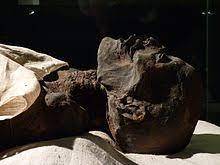
Ramses the I is usually somewhat overlooked, partially due to being overshadowed by his eventual successors and namesakes, Ramses II and Ramses III, the former of which is considered to be 'Ramses the Great', and both of which achieved great things in the realm of battle and buildings. Also unfortunate for Ramses I is the length of his reign, which while disputed, is considered to have been relatively short.
Menpehtyre Ramses, born of Seti, started and was the first Pharaoh of the 19th dynasty of Egypt, and the dates of his reign are generally considered to be around 1292–1290 BC or 1295–1294 BC. However, he was born as a common man, and his father, Seti, was a military commander. Originally, Ramses I's name was Pa-ra-messu, and he eventually grew to succeed his father's rank in the military. Due to this, he became a close confidant with the Pharaoh of the time, the Pharaoh Horemheb.
You may know Horemheb as being one of the main successors of the throne after Tutankhamun's death which, to my knowledge, is wrapped in a little bit of a mystery, but was likely due to genetic malformations from his many diseases. Ay and Horemheb, the Grand Vizier and the General of Armies (respectively), held the main power of the country while Tutankhamun was Pharaoh. This was a time of turmoil––the country was just recovering from the reign of the heretic Akhenaten, who had banned religious worship of any God but the Aten, and essentially attempted to enforce monotheism upon a culture that had been polytheistic for thousands of years previously. Akhenaten had also severely neglected Egypt's relationship with foreign powers. Obviously, people weren't very happy with Akhenaten, and I think it likely they were not fond of Akhenaten's son, Tutankhamun, either. But Tutankhamun, with the help of his advisors and of Ay and Horemheb, reversed many of his heretic father's commands and laws. But Tutankhamun still sailed to the west at the age of 19. He had two baby girls, but neither of them survived past infancy. He had no successors, so Ay took the throne, and then Horemheb.
Horemheb enacted many more reformations to remove Akhenaten's efforts to change Egypt. He tore down the statues of Akhenaten and his monuments, reusing the stone in monuments and temples of his own. He also reused the monuments built for Ay and Tutankhamun, though this was a common practice in Egypt. But Horemheb had no surviving sons, so when it came time for Horemheb to pass on and appoint a new Pharaoh, his Grand Vizier took his place; Paramessu, who would take the name Ramesses I, meaning "Ra has fashioned Him". Ramses I was nearly 50 years old when he ascended to the throne. It was a remarkable age to become Pharaoh, as at this time, he would've already been considered elderly.
What little he did during his life was later completed by his son and successor, Seti I. He himself accomplished mainly one thing, which was to send additions to the garrison at Aswan, the border between Egypt and Nubia; though he also led a military expedition into west Asia and reopened turquoise mines in the Sinai. But the most remarkable things are the ones he didn't complete himself, such as additions to the Karnak temple complex in east Thebes, known as Waset at the time. He ordered to be carved great reliefs into the second pylon of the Karnak temple, which is a massive gateway that one sees relatively soon upon entering the complex. In Abydos, he began construction of a chapel and a temple, but it would have to be completed by his son, as Menpehtyre Ramses died in either the year of 1290 or 1294. His reign was so short that he had very little time to schedule or complete any great monuments, and even his tomb was rushed to be completed, and he was hastily buried in the Valley of the Kings. This rush unfortunately led to a great deal of errors being made in the paintings upon his sarcophagus. Later, however, Ramses I's son, Seti I, finished the chapel in honor of his father, with beautiful carvings and reliefs at Abydos.
His tomb was robbed thoroughly. By the time archaeologists got to it, all that remained were two six-foot tall (1.8 meters) wooden guardian statues who once had gold-foil skin, statuettes of Gods from the underworld, and the massive granite coffin which no longer carried its' owner. Menpehtyre Ramses had been taken to the Royal Cache, located above Hatshepsut's mortuary temple to the southeast. It was the tomb of the pharaoh Amenhotep II, but repurposed to be a protective place for the mummies of many Pharaohs and Queens, as most of the tombs of the Valley of the Kings had become victims of graverobbers. These protective actions were taken by the High Priest of Amun, Pinedjem II, in the 21st Dynasty.
Unfortunately this did not stop the usurping of Ramses I's body. He was stolen by the Abu-Rassul family of grave-robbers and sold by a Turkish vice-consular agent named Mustapha Aga Ayat in Luxor to a man named Dr. James Douglas. Douglas brought Ramses I to the US around the year of 1860, where he was placed in a museum in Niagara Falls with little information known about him. All that was speculated was that he was 'a Prince of Egypt'. Ownership of the museum, and thus of Ramses I, was passed through several hands, but his importance was only recognized with the help of the Canadian Egyptologist Gayle Gibson. Fortunately, in the year 2003, October 24, Menpehtyre Ramses was returned to his homeland of Egypt, and is now resting in the Mummification Museum in Luxor, Upper Egypt.
#Ramses I#ancient egypt#ancient history#egyptology#sometimes people just send me random phrases like this. i dont know what to do with them#so i just write little essays#is this what you wanted?
27 notes
·
View notes
Text
"The studied sources show us the importance of ancestors’ worship in domestic context. We may even say that it is the predominant household religion practice in the Middle Kingdom. Several typologies of vestiges clearly point to this kind of practice: the altar and the associated stela from Lisht and also from Askut, the parietal decoration from Lahun, the stela from Lahun, and, above all, the set found at Kom el-Fakhry (the different elements were accounted separately), illustrate, clearly and without interpretation doubts, a domestic space aimed for ancestors worship.
[…]
The worship of divinities seems to be less pronounced in the Middle Kingdom household religion. This idea is consistent with the prevailing perspective that states that the relationship between the believer and the gods, in ancient Egypt, only effectively develops in the New Kingdom within the context of Personal Piety24. Nevertheless, in the Middle Kingdom, the gods weren’t absent in the domestic context. They are identifiable, in representations or through the presence of the name, in statues (Taweret and an unidentified god), stela (Khentekhetai), figurines (Taweret and Isis with Hórus), ceramic pieces (Bes and Sobek) and mainly in amulets (Ptah-Sokar-Osíris, Taweret, Bes, Hathor, unidentified god and Harpócrates)."
Susana Mota, « Beyond the obvious: the Middle Kingdom sources and its contribution to the study of household religion in ancient Egypt », ENiM 11, 2018, p. 27-28.
20 notes
·
View notes
Text
This is what I did for my Middle Egyptian practice today. If there are any ghosts of 18th dynasty Ancient Egyptians on tumblr then I hope they find this to be a funny meme.
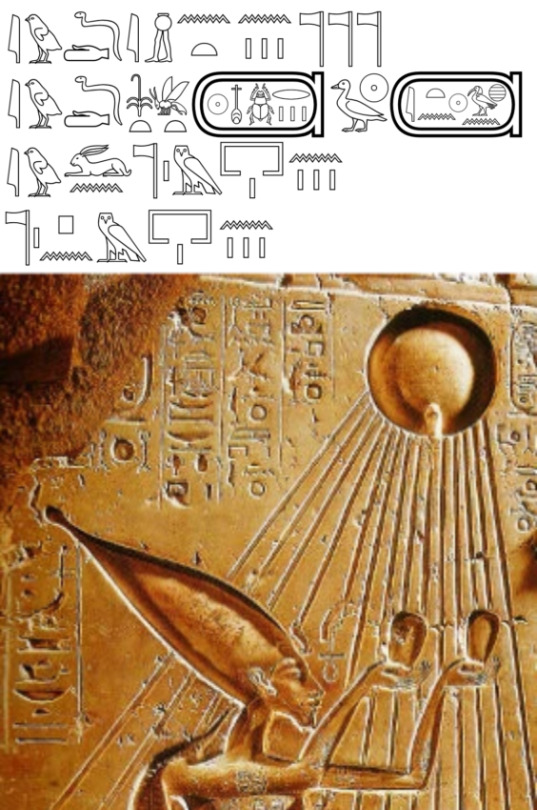
(I might have gotten something wrong here since I’m still learning the language, but this was very fun to make, especially since already I knew how to spell all the words in it except for the names.)
Translation:
Says I: “May we get gods?”
Says the King of Upper and Lower Egypt Neferkheperura Akhenaten: “There is god at home.”
This god which is at home:
484 notes
·
View notes
Text
Palestinian-Israeli "conflit" in 30 secondes
3K notes
·
View notes
Text

The goddess of the sky, Nut, inside the sarcophagus of King Merneptah, (XIX dynasty, 1273-1202 BC) This celestial goddess covered with stars, arches covering the Earth.
2K notes
·
View notes
Text
Kemeticism Under the Advice of Ptah-Hotep:
Maxim 4
This is the final maxim to communicate wisdom upon the subject of arguments and verbal adversaries. We have covered arguments with opponents who are both greater and equal to you, but the fourth maxim explains the proper way to act in an argument with someone who is inferior.
Translation of Maxim 4:
In debate with an opponent who is by no means your equal, do not take advantage of his weakness by attacking him. Let him show his own mediocrity and he himself will provide the rod with which to beat his own back. Resist the temptation to show him up and don't lose your temper. It is despicable to crush an inferior. People will then act according to your wishes, while your adversary will sink in the eyes of the great ones.
Breakdown:
Lesson
Jacq's translation
Direct translation
Do not take advantage of the weaknesses of those inferior to you. Harming someone who does not have the means to protect themselves is against Ma'at.
“In debate with an opponent, who is by no means your equal, do not take advantage of his weakness by attacking him… it is despicable to crush and inferior.”
“…unworthy is the one who harms an inferior man.”
Those inferior to you will show their own mediocrity simply by showing themselves; thus it is best to stay silent and let them reveal themselves.
“Let him show his own mediocrity, and he himself will provide the rod with which to beat his own back.”
“Bring him down to earth, and he will punish himself.”
Resist temptation to prove yourself as better to one you know to be your inferior.
“Resist the temptation to show him up and don’t lose your temper.”
“… may your heart not be aggressive with him because of his weakness… do not answer him to relieve your heart.”
For the final time I would like to press the importance that Ptah-Hotep puts upon control of oneself and, ultimately, the dispelling of pride. Being able to put these ideas into motion within one's own life allows one to see the importance of expression and communication, which is one of the major ideals of Egyptian thought.
The sanctity of words rises above all. Such things as pride and desire can make the art of language sick and twist its' meaning. In Memphite theology and the Egyptian's idea of the universe and cosmology, words held great meaning, and those words written down turned both the writer and their thoughts into immortal pieces of knowledge. No thought left unexpressed by the mouth had any existence or meaning in the world. The last thought to express about these maxims, maxims 2, 3, and 4, deals with control.
When we are able to control ourselves, we control the world. We are able to control how we see the world and our reaction to everything that happens within it. We are able to see and experience our emotions but not act upon the negative ones, or the ones which do not serve us. When we control ourselves, we are able to express ourselves perfectly, and pride does not cloud our vision of the truth.
Ptah-Hotep does not preach an extreme asceticism to follow when wanting to learn how to control yourself. In fact, he preaches very little in terms of teaching one how to become in control. It is up for the individual to find their path and take from the teachings of many to make their way towards the state of imyakh, or im-akh; the state of Blessedness. This unsure path is because Ma'at is fluid and personalized, and takes into account the surrounding circumstances. It is not an unchanging dogma since Her true representation is within balance and harmony, and such things cannot be achieved through strict and rigid dogma or asceticism, though nor can it be reached through extreme pleasure.
This is the underlying message. But I think the most overt message, and one still of great importance, is to realize the power of words. The invention of language has allowed us to express complex thought and with the complexity we have given our human languages, has allowed us to soar beyond the machinations and rituals of other animals on earth. Even further, the invention of writing has allowed us to peer into the past and hear the exact words of people who lived possible thousands of years before us. But being able to express yourself within the parameters of the language you know can be quite difficult, and was considered by Ptah-Hotep to be one of the hardest practices to master. When one is able to express themselves concisely, they are able to communicate the very core of their essence, and the essential thought in their mind. When one is unable to do this, they are misunderstood, and chaos can follow. This is why being able to speak and communicate with the perfect word is a true following and deep understanding of Ma'at, as the absence of the perfect word leads readily to isfet, or chaos.
While at first these last three maxims may seem to simply give advice for particular situations, when one looks deeper, one can discover a great, hidden message within the words of the Vizier Ptah-Hotep. By analyzing the words handed down to us over the millennia, we are able to see true depth of thought within all our ancestors, beyond what simply meets the eye and passes on.
20 notes
·
View notes
Text

107K notes
·
View notes
Text
Kemeticism Under the Advice of Ptah-Hotep:
Maxim 3
As mentioned in my previous post, maxims 2-4 concern themselves with debate amongst adversaries of equal, lesser, and greater footing. This maxim deals with an opponent of equal stature.
Translation of Maxim 3
In debate with an equal opponent, your skill is shown to its best advantage if you remain silent while he flounders in speech. The audience will be unmoved by his arguments while your reputation will soar in the eyes of the great ones.
Breakdown:
Lesson
Jacq's Translation
Direct Translation
It is better to remain silent in arguments with an equal adversary.
“… your skill is shown to its best advantage, if you remain silent while he flounders in speech.”
“If you get into a debate with your equal… make sure that you act so that your superiority (your skill) is manifest by silence, while he expresses himself badly.”
Pride through attempting to protect your image is a downfall that will lead to failure. One's words must be chosen carefully.
"... your skill is shown... if you remain silent... your reputation shall be perfect in the spirit of the great ones."
"... act so that your superiority is manifest by silence... your reputation shall be perfect in the spirit of the great ones."
Those who talk more and talk over other people often fail in their speech.
“… while he expresses himself badly (as you are silent). Those who listen to him will think badly of him whereas your reputation shall be perfect in the spirit of the great ones.”
“Those who listen to him will think badly of him, whereas your reputation shall be perfect in the spirit* of the great ones.”
* - Also translated as, 'in the knowledge of the great ones,' in the Prisse Papyrus.
Ptah-Hotep highly advises quietude as a positive attribute, and negates the aim of putting down an opponent with emotion. This shows both a great deal of wisdom, as well as a distinct absence of pride. An absence of pride, and in its’ place a lifestyle of asceticism is typically considered an eastern concept from the religions of Buddhism and certain sects of Hinduism. However within Ptah-Hotep’s advice exist inklings of a school of thought familiar to the east; one which encourages certain aspects of asceticism.
Speech in argument is often mired in pride. There is a distinct need and desire to protect your image in the minds of onlookers and listeners, who may judge you for being 'put down' by the words of your opponent. But why does one fear the judgement of others? Pride is something we all constantly carry, given to us by the notion that we are in any way special, whether especially good or bad. Generally, however, pride’s self-importance gives us a sense that we are better. But even the idea that we are better than animals, better than plants, is misled. All things are equal in their worth, because in truth there is nothing that has any tangible worth. Death rids us, and every other thing on earth, of any worth. As the Teachings of Prince Hordedef state,
“Accept that death humbles us, accept that life exalts us, the house of death is for life.”
Death makes us humble. It takes away our worth and makes it so we are all equal.
Life exalts us. It makes us feel wonderful, and does wonderful things for us, but this exaltation is temporary. Does it mean that this exaltation is false? Is it a lie? I do not believe so. As temporary as our worth on this planet is, it is true in that moment, but it can be taken away in a second, which is why it is bad to base any of your ka's worth on your material worth.
Death and its' many rituals and accompaniments are an honouring of life. As soon as death takes away our material worth, it gives us spiritual worth, and ascends us into a state of Blessedness. Material worth and material desire, including such things as pride, our money, our status, and even our material bodies, are temporary and fleeting.
This state of Blessedness after death is something achieved by all who follow Ma'at and the yearnings of their creative energy, their ka. But it is something that can be achieved during life, and something that can make one happy and enriched for all time; enriched not by the material wealth they congregate, but by the great spiritual mind which acts purely upon Ma'at and the happiness of the Gods, no longer attached to temporary pleasures and the uncontrollable emotions which flood from the gut, our place of primitive emotion.
Control consists not of a lack of material desire, but having desires and being able to not succumb to them, which may then lead to a lack of material desire. Control means no material desire, no pride that is succumbed to, and thus well-expressed thoughts and words that are not hindered by pride and the workings of the gut, instead inspired by the workings of the ka, your heart.
20 notes
·
View notes
Note
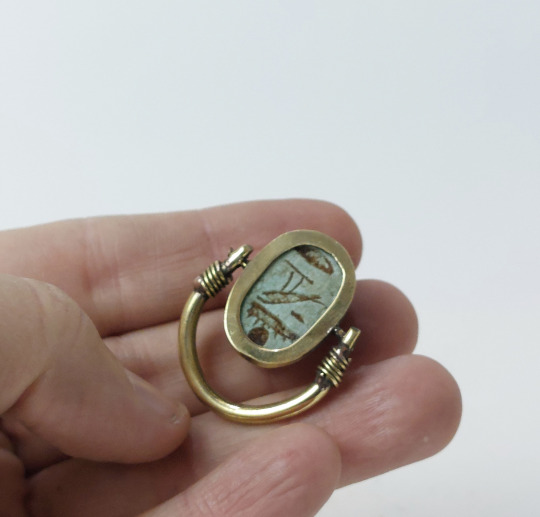
I was wondering if you would be able to translate this? It’s a replica and I want to know if it says anything or if it’s complete gibberish before I buy it. Thank you, and have a nice day!
This appears to be a cartouche for a Pharaoh that doesn't exist. I could be wrong, but I think it's gibberish––designed to look like a Pharaoh's name, and does it very well, but doesn't actually refer to anyone historically. If I were to transliterate it, it's something along the lines of 3nb-mn-ra. Still a beautiful piece of art even if it doesn't mean much.
31 notes
·
View notes
Text
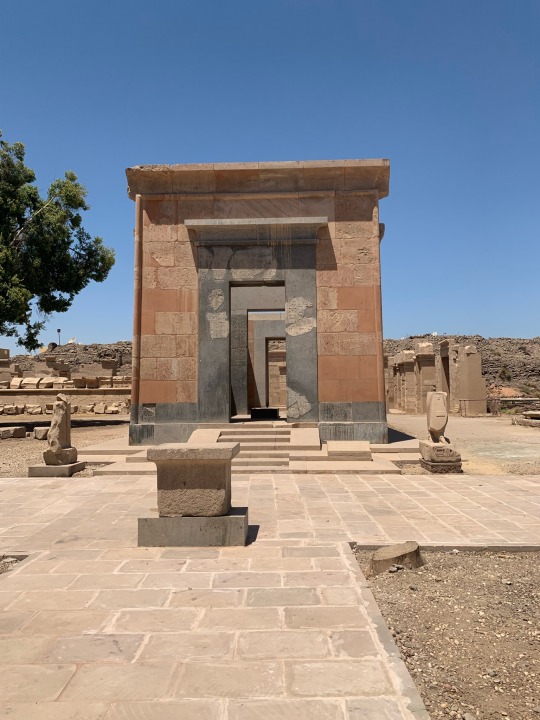


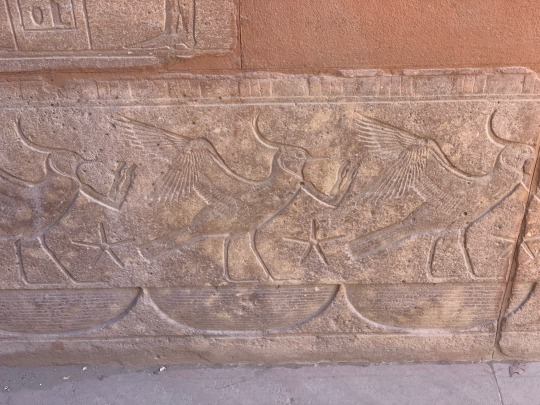
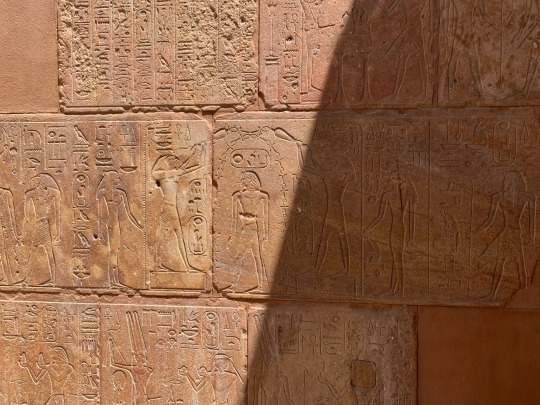


Hatshepsut’s Red Temple, currently presiding in Luxor, in the Karnak Temple Complex. Although never finished and deconstructed after the end of Hatshepsut’s reign, it has been rebuilt now; at least what remains of it. It’s rather small and has no roof now, but the basalt basin shows clearly its’ purifying uses, as in the back exit, small canals were built into the steps to let water run off. The red stone of the temple shrine glitters in the sun, outlined by rich black doorways.
#ancient egypt#Hatshepsut#egyptian hieroglyphs#egyptian gods#egyptian mythology#ancient history#egyptian art#egyptology#ancient art#hieroglyphs#archaeology#kemetic#kemet
697 notes
·
View notes
Text
Clothing Rituals
This type of ritual was performed daily, monthly, for special occasions, or it was done annually for the New Year in Ancient Egypt- this largely depended on the temple and the time period. They have been attested dating back to the Old Kingdom and lasted until Ptolemaic times. From the Abusir papyrus that was found in royal funerary temples- specifically from pharaohs Neferirkare and Raneferef, we can see that these rituals were done monthly; however, the deity of the temple was the deceased king. In later times, this ritual was performed daily for the main gods in the temple. What we do know from this type of ritual is best explained in pBerlin 3014, pBerlin 3053 and pBerlin 3055 (which is dated to the 22nd dynasty), along with the temple of Seti I in Abydos and Ptolemaic temples.
In the morning, the ba was reawoken for the god by unveiling them from the night before. You would say your admiration of the god with a prayer or hymn before washing off the mD.t unguent and undressing it from the mnH.t cloth. The mD.t unguent and the mnH.t cloth is speculated to help with regeneration and renewal. The mnH.t cloth was commonly “depicted as one or two stripes of cloth folded in half and often referred to as four-coloured cloths- white, green, red and blue (or dark-red). Each of these colours had its own symbolic meaning connected with protection, health, fertility, regeneration and renewal” (The Clothing Rite, 66). Next, the statue was then purified with natron and incense (perhaps myrrh, frankincense, or palmonia resin) before it was redressed in clean mnH.t cloth. The mD.t unguent was reapplied to the statue, along with green and black paints. Next, formal clothing was adorned to the statue, along with jewelry and pectorals before, lastly, the final purification and fumigation took place.
How can you implement this into your practice?
Based off of the steps known from ancient practices in temples of Egypt, it is possible to do a daily rite with this, if you choose, or on days when you want to go to your own shrine.
First, find a place for your statues so they won’t get damaged. Find a good piece of cloth, preferably linen to conceal the statues when they’re not at the forefront of your practice. When they’re not in the forefront of your practice veil the statue.
Unveil the deity’s statue.
Next, invoke the deity along with saying or singing a prayer/hymn.
Third, use natron to help purify and light some incense. You could use something universal like myrrh and frankincense or your could use UPG and choose the one you think they would like best.
Fourth, dress the deity in some new cloth and annoint the statue. I cannot find anything about mD.t ungunet at this time but you could use something that you’ve dedicated to just them- whether you make your own oil or purchase it.
Fifth, add on the regelia and jewelry. While this step isn’t always possible for everybody, I will add it. You could get Barbie jewelry to add or you could make your own to size. You could repaint on the makeup if you choose, as well.
Lastly, the final purification and fumigation. Relight your incense. This one should be more specific to cleansing.
Sources:
Coppens, Filip. Vymazalová, Hana. “Linen for the God: The Interpretation of Old Kingdom Clothing Rites in the Light of First Millennium BC Rituals (and vice versa).” 2016. https://academia.edu/resource/work/37212908
Coppens, Filip. Vymazalová, Hana. “The Clothing Rite in the Royal Temples of Abusir.” 2009. https://www.researchgate.net/publication/291332482_The_clothing_rite_in_the_temples_of_Abusir
Sharpe, Samual. “The Rosetta Stone in Hieroglyphics and Greek Translations. 1807. https://www.ganino.com/anteanus/scripturam_aegyptium_rosetta_stone
51 notes
·
View notes
Text

Pharaoh and sleeping cat
44 notes
·
View notes
Text


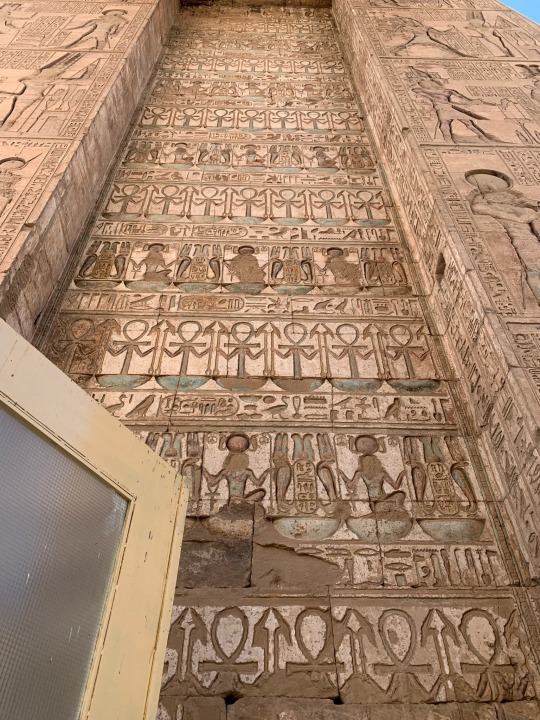


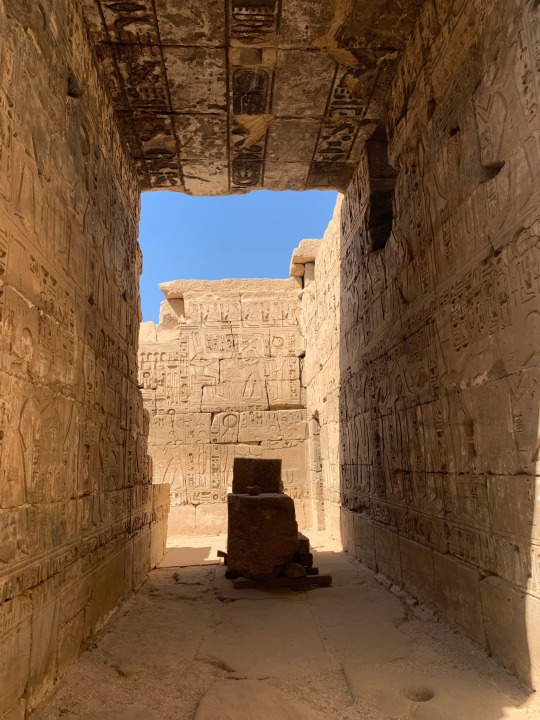



Imagery from Khonsu’s Temple within the Karnak Temple Complex in Luxor, Thebes.
The Karnak complex is massive and it’s temples ornately decorated despite their age. I took these photos near the end of July—it was over 45 degrees celsius, so there were few people there. The experience, especially because of the lack of people, was richly unique and beneficial to the soul.
#ancient egypt#kemet#Khonsu#egyptian mythology#ancient history#egyptian hieroglyphs#egyptian gods#egyptian art#egyptology#kemetic#ancient art#hieroglyphs#archaeology
926 notes
·
View notes
Text
Kemeticism Under the Advice of Ptah-Hotep:
Maxim 2
These next few maxims will be about how to handle yourself in an argument with an equal, an inferior, and one who seems themselves as superior. Again, whilst on the surface there is a general lesson or speech, if you dig deeper there is more to be learned.
Translation of Maxim 2
In debate with an opponent who is both sure of himself and seems more skillful than you, keep your head down and don’t over-react. Don’t challenge him; you won’t succeed in matching his argument. But wait till he puts his own case badly, then destroy him utterly by refusing to oppose him. He will be shown up as an ignoramus and your clear thinking will win the day over his wordiness.
Breakdown
Lesson
Jacq’s translation
Direct translation
Do not overreact to those seemingly more skillful than you—don’t act angrily
“In debate with an opponent, who is both sure of himself, and seems more skillful than you keep your head down and don’t overreact.”
“If you come across a debater… Who directs his heart as one more skilled than you, fold your arms and bow.”
Whether someone is foolish enough to think there is no possibility of them being wrong, or if they are indeed correct, they cannot be won over; they will never listen.
“Don’t challenge him; you won’t succeed in matching his argument.”
“Do not set your heart against his, for you will not be able to equal him.”
One of the best ways to deal with an opponent who believes they are better than you in debate is to deny him a rebuttal; let his mouth run, as his speech will show his personage.
“But wait till he puts his own case badly, then destroy him utterly by refusing to oppose him.”
“May you bring down the one who expresses himself badly by not opposing him while he is in full flow; that is how he will be exposed as being ignorant…”
Clear thinking and thought out words will win over talking too much and constantly.
“He (the debater) will be shown up as an ignoramus, and your clear thinking will win the day over his wordiness.”
“May you bring down the one who expresses himself badly by not opposing him, while he is in full flow; that is how he will be exposed as being ignorant, as soon as your heart dominates his over-abundance.”
Arguments and debates are not something the human brain often handles well. Unless you are a skilled and trained debater — and even then there are many exceptions — volatile emotions often overcome logic, and neither point, no matter how valid or invalid, is put to truth in good communication. This maxim deals with an argument you may have with a superior; someone who either thinks themselves better than you, or holds power over you in some way, whether through knowledge or status.
While the essence of Ptah-Hotep’s lessons here are simple enough to understand, fully comprehending and bringing to realization these concepts can be very difficult. Allowing oneself to be quiet in an argument, to not interrupt and interrogate with one’s own ideas, is challenging. However in order to overcome a debate, whether it is useless or pertinent in its’ topic, one must master this idea.
To accept this task as a goal, it is important to look at the cause of why many people find it difficult to stay silent in arguments, and why these people instead blurt things out that are either impulsive or misinformed. The source of this is anger, and pride; thus the solution comes easily. Humility, true humility and not false modesty, allows us to think clearly and not react suddenly and impulsively to cover up broken pride. As stated in this maxim and in lessons before, pride can lead to great ruin, and it is something that must be abolished within one looking to become a wisened sage. Humility and mastery of the self do not only yield the ability to overcome arguments and debates; this is a given. It can bring one closer to enlightenment and happiness, and to true peace.
So while this particular maxim outlines self mastery and humility’s use in arguing with an adversary who thinks themselves better than you, its’ lesson stretches far beyond that and can be applied to many spheres of life. This is why it is so important to analyze the words of Ptah-Hotep; wisdom is hidden everywhere in the words of a sage.
#Ptah Hotep#ancient egypt#egyptian mythology#ancient history#egyptian gods#egyptian hieroglyphs#egyptian art#egyptology#hieroglyphs#kemet#kemetic
24 notes
·
View notes



